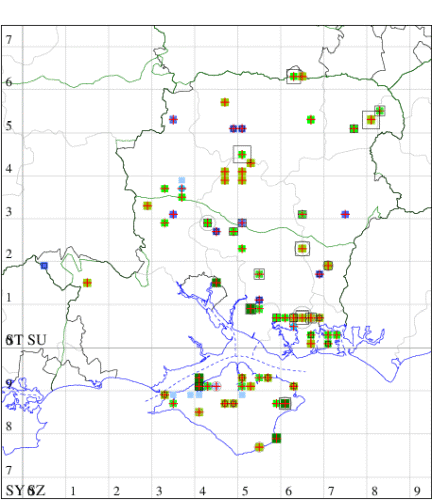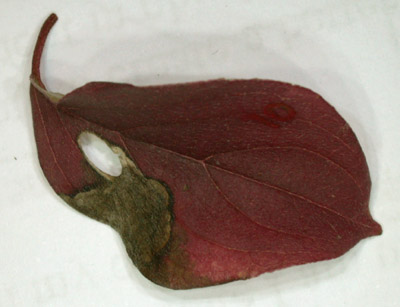Antispila petryi
Checklist Number06.002 [B&F: 0159]
Verification
Record will normally be accepted but photo evidence may be required - check with CMR if not sure of identity
Classification
| Family: | Heliozelidae |
| Subfamily: | Heliozelinae |
| Genus: | Antispila |
| Species: | petryi |
| Authority: | Martini, 1899 |
Local in woodland, and on downland and scrubland throughout southern England, north to Yorkshire. In Hampshire and on the Isle of Wight not uncommon where the foodplant grows, recorded mostly as vacated mines and leaf cut-outs. Wingspan 6 mm. May be separated from the other Cornus feeding Antispila A. metallella by its smaller size, darker and less coppery ground colour, the shape of the pre-apical spot, the colour pattern of the terminal cilia and the paler and less purple hindwings (MBGBI Vol 1). Larva mines leaves of Dogwood, subsequently living within a movable case, and over-wintering as a pupa. The mines are described in the following link:
leafmines.co.uk
.
Van Nieukerken et al (Nota Lepidopterologica 41, 2018) documented that the Cornus feeding Antispila species was in fact A. petryi (not previously on the British List) and not A. treitschkiella as previously assigned; therefore all historic records of A. treitschkiella have now been reassigned to petryi. True Antispila treitschkiella has only been found in the UK in London (2016). It feeds on Cornelian Cherry (Cornus mas) and has two generations a year.
The forewing costal spot is usually triangular in treitschkiella, whereas it is trapezoid in petryi, but the two are best distinguished by male genitalia, larva and hostplant.
Leaf-mines can be found in August to October, the larva eating out a short gallery leading to a blotch, then cutting an oval case.
Link to article on the discovery of A. treitschkiella in Britain
Reference:van Nieukerken, Lees, Doorenweerd, Koster, Bryner, Schreurs, Martijn, Timmermans, Sattler (2018), Two European Cornus L. feeding leafmining moths, Antispila petryi Martini, 1899, sp. rev. and A. treitschkiella (Fischer von Raslerstamm, 1843) (Lepidoptera, Heliozelidae): an unjustified synonymy and overlooked range expansion, Nota Lepi. 41(1) 2018: 398.
leafmines.co.uk
.
Van Nieukerken et al (Nota Lepidopterologica 41, 2018) documented that the Cornus feeding Antispila species was in fact A. petryi (not previously on the British List) and not A. treitschkiella as previously assigned; therefore all historic records of A. treitschkiella have now been reassigned to petryi. True Antispila treitschkiella has only been found in the UK in London (2016). It feeds on Cornelian Cherry (Cornus mas) and has two generations a year.
The forewing costal spot is usually triangular in treitschkiella, whereas it is trapezoid in petryi, but the two are best distinguished by male genitalia, larva and hostplant.
Leaf-mines can be found in August to October, the larva eating out a short gallery leading to a blotch, then cutting an oval case.
Link to article on the discovery of A. treitschkiella in Britain
Reference:van Nieukerken, Lees, Doorenweerd, Koster, Bryner, Schreurs, Martijn, Timmermans, Sattler (2018), Two European Cornus L. feeding leafmining moths, Antispila petryi Martini, 1899, sp. rev. and A. treitschkiella (Fischer von Raslerstamm, 1843) (Lepidoptera, Heliozelidae): an unjustified synonymy and overlooked range expansion, Nota Lepi. 41(1) 2018: 398.


The abundance in each month is indicated as follows:
 No records
No records Very occasional
Very occasional Irregular
Irregular Uncommon
Uncommon Off-peak, but not unusual
Off-peak, but not unusual Off-peak, but not unusual
Off-peak, but not unusual Main flight time
Main flight time| J | F | M | A | M | J | J | A | S | O | N | D | |
|---|---|---|---|---|---|---|---|---|---|---|---|---|
| Adult |  |  |  |  |  |  |  |  |  |  |  |  |
| Larval |  |  |  |  |  |  |  |  |  |  |  |  |

